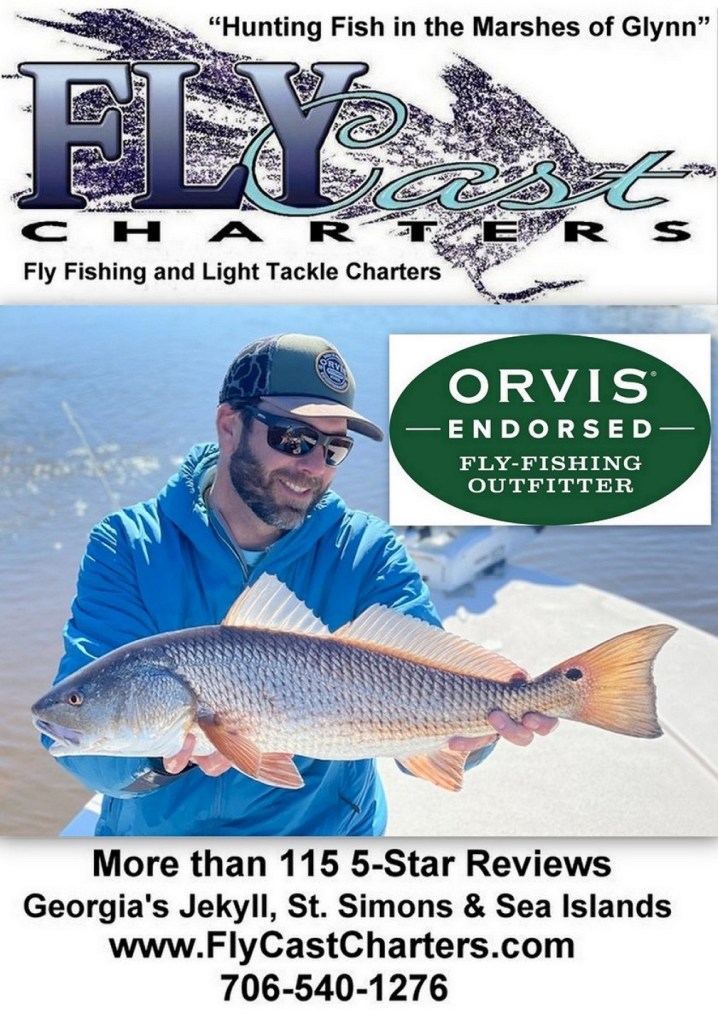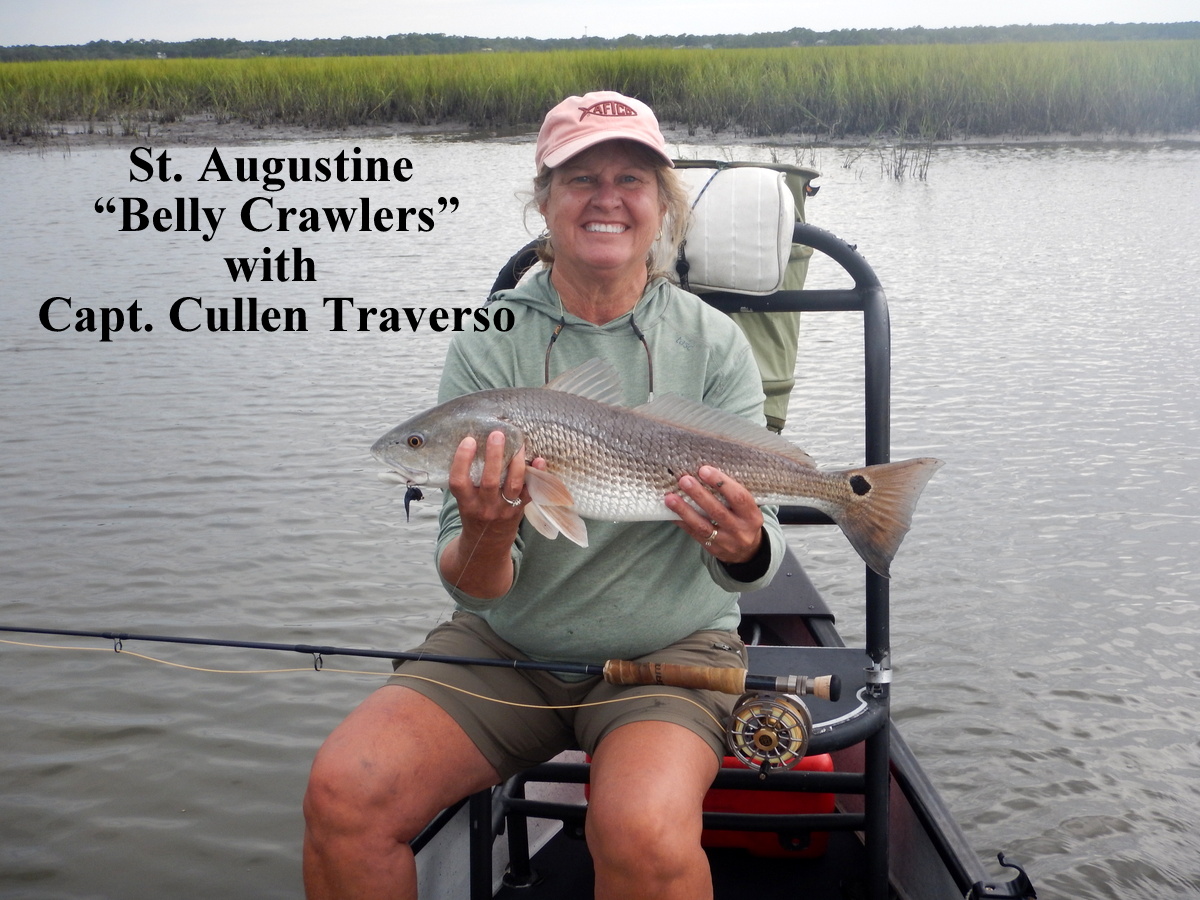On The Fly Freshwater
Featured photo by Polly Dean.
Usually thought of as a Middle Georgia fish, Shoal bass also can be caught in the highlands in the shadow of Yonah Mountain.
By Jimmy Jacobs
October 2020
Advances in DNA testing in recent years has led to expansions in the number of black bass species identified in the southern states. Up until just prior to the millennium, fisheries biologists recognized just half a dozen such species. Though not all are fully recognized at this point, the various state biologists in Alabama, Florida and Georgia have pushed that number up around 15.
The fish that was the harbinger of this flurry of research was the shoal bass (Micropterus cataractae). Up until 1999 these fish were considered to be a sub-species of the redeye bass (Micropterus coosae). Today, the shoalie is fully recognized as a separate species.

On The Fly South’s Polly Dean with a Chattahoochee shoal bass. Photo by Jimmy Jacobs.
These bass were originally found only in the Apalachicola/Chattahoochee/Flint River system of Alabama, Florida and Georgia. More recently they have appeared in Georgia’s upper Ocmulgee River drainage. But the fish is most often associated with Middle Georgia’s Flint River – in the past often called a Flint River smallmouth. Also, most of the fishing for the species is situated around and below the fall line, where the Piedmont Plateau drops onto the coastal plain.
There is, however, an exception to that geographic region, and one that offers dependable angling for some quality shoal bass. The section of the upper Chattahoochee River above Lake Sidney Lanier, upstream to the Bavarian theme tourist village of Helen, Georgia holds these fish. Here the shoalies can be caught against a backdrop of the Blue Ridge Mountains just to the north.
The crew from On The Fly South set out to tangle with these shoal bass under the tutelage of Jake Darling, the general manager of Unicoi Outfitters’ two shops in Helen and nearby Clarkesville. Though mostly now tied to a desk and computer, Jake regularly guided anglers for 16 years, and still knows how to handle a raft on the upper “Hooch.”

Jake Darling on the oars as we head down the Hooch. Photo by Jimmy Jacobs. Inset photo courtesy of Unicoi Outfitters.
This section of the Chattahoochee flows through the Nacoochee Valley, composed of deeper pools and runs separated by Class I shoals, with a couple that rate Class II. The floating is popular with the kayak and canoe crowd, but not overly populated by anglers.
As we floated, Jake described the annual angling calendar on this portion of the Hooch. It begins in April with the pre-spawn period, followed in May to early June by the actual spawn. During these months the fishing is at its peak for the bigger shoal bass. These mature fish, which may be as big as 3- to 4-pouns, hold mostly in pools, but may even be found in the shoals as well.
As with shoal bass anywhere, the fish associate with rocks. The edges of any sub-surface ledges are prime spots for casting, since most have shoalies hiding under them. In fact, the fish are rarely found in the open water of the pools.

Casting to an underwater ledge. Photo by Jimmy Jacobs.
Once the summer heat begins, the river comes alive with topwater action. Much of this fishing is targeted on the actual shoal areas, but over all this is a time for catching numbers of smaller shoal bass. The bigger fish at times seem to have disappeared from the river.
By October when the water temperature begins dropping into the 60s, those bigger shoalies reappear, mostly in the pools at the foot of the rapids. Find a ledge that is in calmer water just off the current line, and you likely will find a fish holding there.

OTFS Editor Jimmy Jacobs even got in on the action. Photo by Polly Dean.
For the summer fishing, Darling recommends throwing Boogle Bug poppers or Stealth Bombers. Also, at this time of year, you may see schools of blueback herring that have run upstream from Lake Lanier. Imitating them also can produce fish.
The rest of the year baitfish or crawdad patterns are the ticket. When fishing these, particularly in the fall, the trick is to get them down deep and fish them slow. An intermediate sinking line is ideal for this fishing.
While targeting the shoal bass, expect to pick up a number of spotted bass as well. That is particularly true if you cast around d any wood debris along the shore.

As a special bonus, you just might hook a Chattahoochee bass. This is one of the new species identified by the Georgia Wildlife Resources Commission. These diminutive bass are rather easily identified by their blaze orange fins.
Public access to this part of the Chattahoochee River is quite limited, with virtually the entire length in private property. For that reason, float trips are the norm. For do-it-yourself paddling, Wildwood Outfitters offers rentals of canoes, kayaks and rafts, as well as shuttle services if you bring your own boat.

Photo by Jimmy Jacobs.
For the ultimate, and more likely to be successful, fishing trip, contact the Unicoi Outfitters shop in Helen to arrange a guided day on the river.
Where to Stay
If you head to the upper Hooch for some shoal bass action, you probably want to turn it into at least a long weekend. If you bring along the family, Unicoi State Park & Lodge offers an ideal headquarters for the trip.

Photo by Jimmy Jacobs.
Located two miles northeast of Helen, the park covers 1029 acres, including 53-acre Unicoi Lake. The park lodge has 100 motel style rooms, a restaurant and the Smith Creek Tavern. Also in the park are 30 rental cabins and 51 RV campsites.

Photos by Jimmy Jacobs.
Activities in the park include fishing in the lake and Smith Creek, a zipline course, hiking trails, paddling on the lake, tennis courts, a beach and swimming area, archery or air gun ranges and mountain bike trails.





